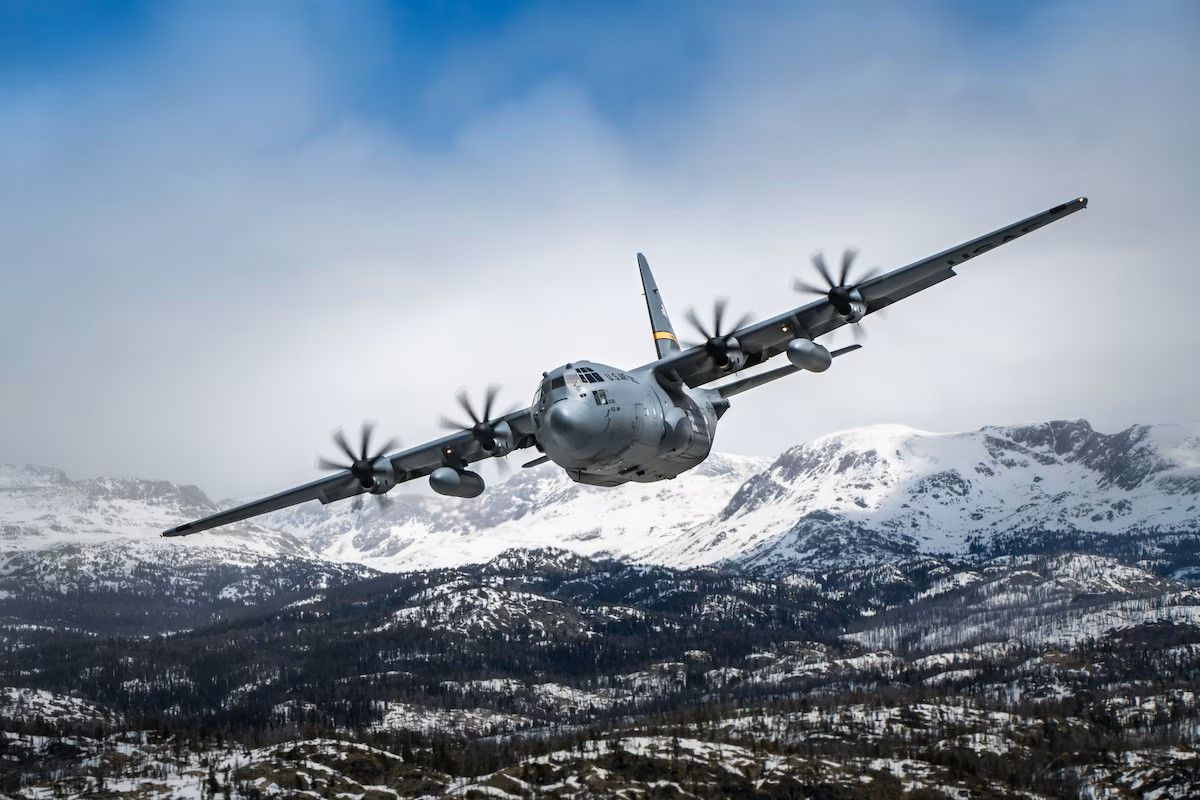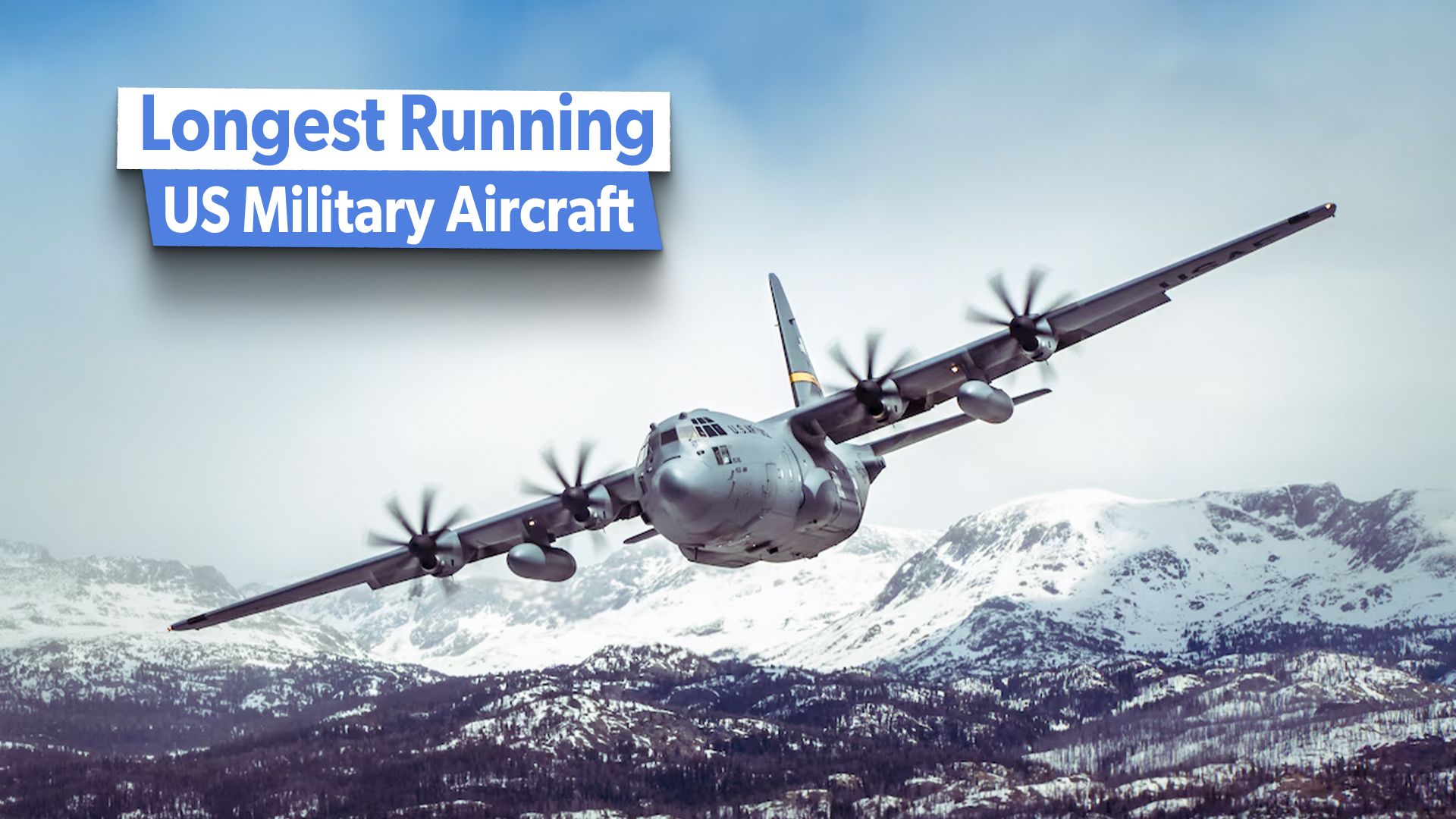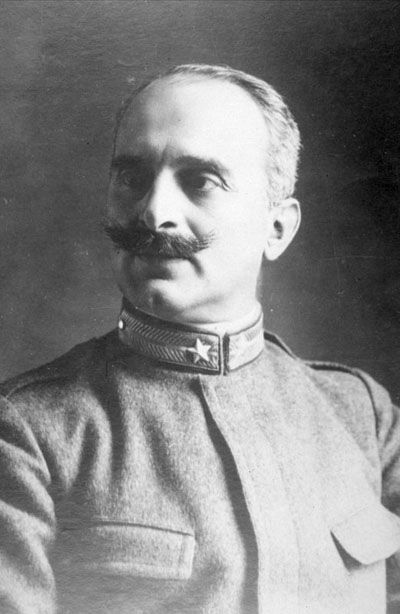The Lockheed Martin C-130 Hercules made its maiden flight on August 23, 1954. This venerable warbird is officially a septuagenarian and still going strong.
Simple Flying now examines how and why the “Herc” has made history and stayed in the fight for so long.
C-130: one aircraft, many iterations
One secret to the C-130’s longevity is that it has been adapted over time to suit the changing needs of the US military. It is also a very versatile aircraft. Lockheed Martin has this to say about the current iteration of the “Herc,” namely the C-130J on their product info page:
“One aircraft, many missions … no aircraft in history or operation today can match the C- 130J’s 19 certified, diverse, multi-mission capabilities. These capabilities are either built as a production variant or can be provided through a roll-on/roll-off configuration, providing additional resources with a short turn around installation time…Innovation never stops, and neither do we. For 70 years, the C-130 Hercules has been at the forefront of tactical airlift missions, continuously evolving to meet the needs of our global operators.”
The company produces seven variants of the C-130J:
- C-130J-30 Super Hercules
- EC-130J Commando Solo
- HC-130J Combat King II
- HC-130J Coast Guard
- KC-130J Tanker
- LM-100J Commercial Freighter
- MC-130J Commando II
Importantly, the C-130 Hercules has more than satisfied its key customer. As the official US Air Force Fact Sheets state:
“The C-130 Hercules primarily performs the tactical portion of the airlift mission. The aircraft is capable of operating from rough, dirt strips and is the prime transport for airdropping troops and equipment into hostile areas. The C-130 operates throughout the U.S. Air Force, serving with Air Mobility Command, Air Force Special Operations Command, Air Combat Command, U.S. Air Forces in Europe, Pacific Air Forces, Air National Guard and the Air Force Reserve Command, fulfilling a wide range of operational missions in both peace and war situations. Basic and specialized versions of the aircraft airframe perform a diverse number of roles, including airlift support, Antarctic ice resupply, aeromedical missions, weather reconnaissance, aerial spray missions, firefighting duties for the U.S. Forest Service and natural disaster relief missions.”
“The flexible design of the Hercules enables it to be configured for many different missions, allowing one aircraft to perform the role of many.”
Gen. Giulio Douhet, the early 20th-century airpower theorist who coined the dictum “Flexibility is the key to airpower,” would almost certainly approve of the C-130.
Gunship duty
One role of the C-130—and the most badass of the bunch—is gunship duty, i.e., the deadly AC-130, which serves Air Force Special Operations Command [AFSOC].
The AC-130 has also had more variants than you can shake a stick at:
- AC-130A “Spectre”: Introduced in 1968; retired in 1995
- AC-130H “Spectre”: Introduced in 1969; retired in 2015
- AC-130U “Spooky II”: Introduced in 1995; retired in 2020
- AC-130W “Stinger II:” Introduced in 2012
- AC-130J “Ghostrider”: Introduced in 2017
The centerpiece of the gunship’s arsenal is its M102 105 mm (4.13 in) howitzer – the biggest gun ever to be wielded by any aircraft, easily dwarfing the 30 mm (1.18 in) cannon of the Fairchild Republic A-10 Warthog.
As if that M102 weren’t impressive enough, the AC-130J Ghostrider is also bristling with the following weapons systems:
- 1× 30 mm ATK GAU-23/A autocannon
- ‘Gunslinger’ weapons system with launch tube for AGM-176 Griffin missiles and/or GBU-44/B Viper Strike munitions (10-round magazines)
- Wing mounted, AGM-114 Hellfire missiles, GBU-39 Small Diameter Bombs (SDBs), and/or GBU-53/B SDB IIs (4 per hardpoint on BRU-61/A rack)
Just how deadly effective is the AC-130’s historical track record? During the Vietnam War alone, the Spectres were credited with destroying more than 10,000 Communist trucks!
Weather Warrior
Another of the C-130’s mission types is weather reconnaissance. Storm-chasing at ground level is one thing (and it’s quite fun, speaking from firsthand experience when I was stationed at Minot AFB, North Dakota). But flying right into the middle of the storm takes it to another level (literally and figuratively).
Enter the WC-130 variant of the “Herk,” which has served since 1962. It’s the weather data collection platform for the 53rd Weather Reconnaissance Squadron (AKA the “Hurricane Hunters”) located at Keesler AFB, Mississippi. This hardy plane and its intrepid crews provide vital tropical cyclone forecasting information, penetrating tropical cyclones and hurricanes at altitudes ranging from 500 to 10,000 feet (151.7 to 3,033.3 meters) above the ocean surface, depending upon the storm’s intensity.
Talk about living dangerously! Yet amazingly enough, only one WC-130 has ever been lost during an operational mission: H-model Serial No. 65-0965, flying in Typhoon Bess northeast of the Philippines on October 12, 1974 (may the crew Rest In Peace).


